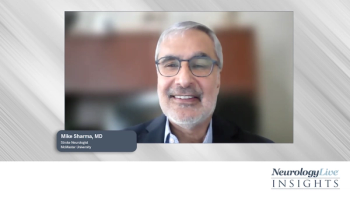
PREEMPT Protocol Is Adjusted Frequently, Raising Questions for Clinicians
The clinical neurology fellow at Brigham and Women's Hospital and Harvard University detailed what recent survey data suggest, why the survey was conducted, and how to possibly improve the approach to the protocol.
Olivia Begasse de Dhaem, MD
Recently, the results of an anonymous clinician survey have implied that the adherence to proper PREEMPT protocol for the use of onabotulinumtoxinA injections in the treatment of migraine may be lower than believed.
The data showed that of the 182 clinician respondents to the survey, 77.5% (n = 141) reported that they did not always follow the PREEMPT protocol, suggesting that perhaps there may be a need for an advisory protocol containing more evidence and a discussion of the reasoning for specific recommendations might be more helpful than the current prescriptive protocol.
Conducted by Olivia Begasse de Dhaem, MD, clinical neurology fellow, Brigham and Women's Hospital and Harvard University, and colleagues, the study also identified that more than half of the physicians surveyed changed the number of injections, the total units of medicine, and the location of the injection site. Similar results were observed in that fewer than 20% of the respondents noted that they rarely made alterations—more than 50% replied that they frequently did so.
To find out more about what these data suggest, why the survey was conducted, and how to possibly improve this approach to the protocol, NeurologyLive inquired with Begasse de Dhaem.
NeurologyLive: What prompted this assessment?
Olivia Begasse de Dhaem, MD: As a neurology resident and now headache medicine fellow, I have had the privilege of watching 14 attendings inject onabotulinumtoxinA for chronic migraine prevention. I was surprised by the procedural differences between providers. We discussed this and decided it would be interesting to survey Headache Medicine providers to possibly identify trends in protocol modifications.
What are the main takeaways for the clinical community from this study?
Less than a quarter of headache providers surveyed always follow the PREEMPT protocol for onabotulinumtoxinA injections for the prevention of chronic migraine. The majority of providers who deviate from the protocol have at least 3 years of experience. The reasons for protocol modifications included: patients’ pain, anatomy, comfort, and preference; comorbid temporomandibular joint disorder; efficacy; and waste and/or cost concerns.
Would you describe the findings as surprising or somewhat unexpected in any way?
Our initial anecdotal observation turned out to be consistent with a larger scale survey. The findings might be surprising because one would expect a protocol to be strictly followed. Personally, I expect modifications in a procedure that is not taught in a standardized way. I was lucky to attend 2 teaching sessions directly with Dr. Andrew Blumenfeld, MD, and to learn from so many different attendings who were willing to engage in discussions on the topic. However, access to education on this procedure can vary.
This study showed that less than a quarter of headache providers surveyed always follow the PREEMPT protocol. It serves as a stepping stone for a future study assessing the efficacy and safety of protocol modifications.
Do you have an idea of what evidence and reasoning should be included in the advisory protocol?
We need evidence and reasoning on the currently recommended location and the number of injections. Although the protocol mentions that 45 extra units can be added according to a follow-the-pain paradigm, more easily accessible information thoroughly describing these potential extra locations is also needed. If we think onabotulinumtoxinA works for migraine prevention on terminal trigeminal and occipital nerve fibers, we need a reasoning for the trapezius injections.
We also need more evidence on the dilution and the impact of dilution on onabotulinumtoxinA diffusion.
Transcript edited for clarity.
REFERENCES
Begasse de Dhaem O, Gharedaghi MH, Rizzoli P. Modifications to the PREEMPT protocol for onabotulinumtoxinA injections for chronic migraine in clinical practice. Headache. Published online April 25, 2020. doi: 10.1111/head.13823.
Newsletter
Keep your finger on the pulse of neurology—subscribe to NeurologyLive for expert interviews, new data, and breakthrough treatment updates.


































